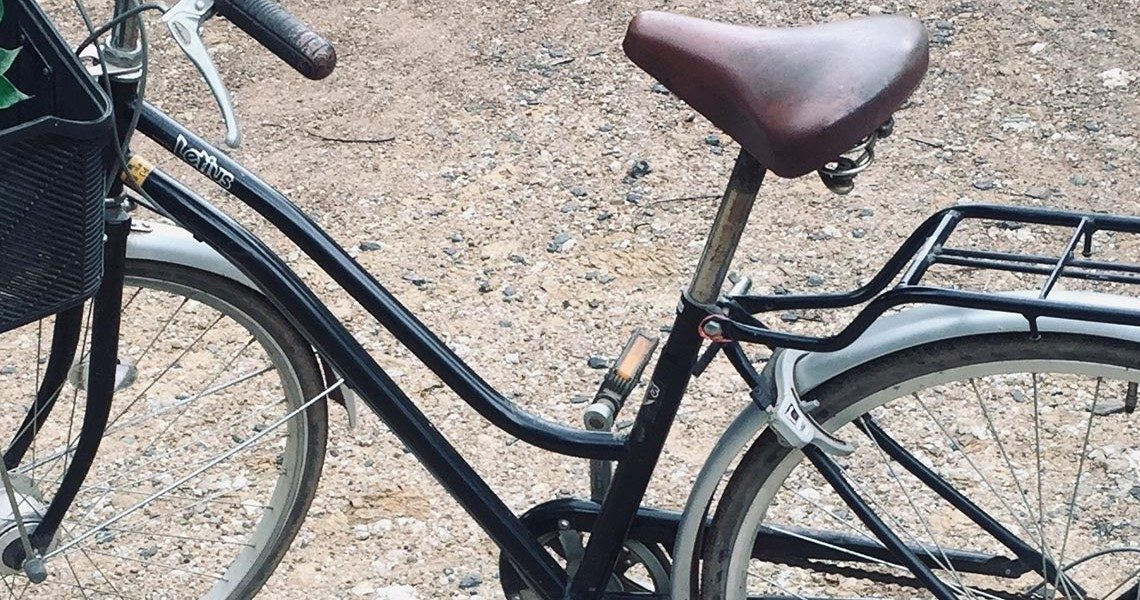Book review: ‘A Time of Birds’ by Helen Moat

Helen Moat’s latest book makes ideal reading for vicarious armchair travellers, stuck at home for reasons beyond their control. It made me forget for a while about coronavirus and the pandemic by taking me away on a revealing and emotionally charged slow journey across Europe.
Yes, despite the fact that Helen Moat is travelling on a sit-up-and-beg bicycle in the company of her 18-year-old son Jamie, also on a bike, ‘A Time of Birds: Reflections on Cycling Across Europe’ (Saraband, £9.99, ISBN 9781 912235704) constitutes an excellent example of ‘slow travel’ – a relatively new literary genre (as well as a way of getting around) that is quickly gaining popularity in our age of constant rush, brief encounters and half-baked impressions, gleaned from the windows of high-speed trains and supersonic jets.
Moat’s progress across Europe is slow in the best sense of that word, for it is rich in emotional flashbacks and keen observations (including a number of technological and engineering ones) that could have never been made in a hurry. For Moat, who has already authored several ‘slow travel’ guides to parts of Britain, this was a journey of personal rediscovery (a rather brave endeavour for someone in her fifties – but don’t we all require it from time to time?), of coping with depression and with a certain loss of direction in her life.
It was also a moving farewell to her much-loved father, a devoted birdwatcher whose hobby inspired the book’s title and who ended his days in a Northern Ireland care home. Moat aptly describes her trip as an “unconscious journey in mindfulness”, which implies concentration and undivided attention – essential qualities for a travel writer.
Reading ‘A Time of Birds’, I couldn’t avoid strong associations with two other books, both among my favourite works of travel writing: Patrick Leigh Fermor’s all-time slow travel classic ‘A Time of Gifts’ (echoed in Moat’s own title) and ‘Walking the Woods and the Water’ by Nick Hunt, a much more modern travelogue retracing Leigh Fermor’s footsteps.
Like both of these authors, Moat is an exquisite stylist. Her unhurried, free-flowing narrative captivates the reader from the very first sentence – “From deep within the bowels of the ferry, I thought I heard the thrum of the engine spluttering and dying away” – and does not let go until the end. Such is the quiet, almost hypnotic, power of her prose that it keeps creating the illusion of presence which makes the reader bounce with her on the road bumps and potholes of Romania and freak out when overtaken by some scary “Hungarian lorries that rolled and tipped past us like drunken killer whales just inches from our bicycles”.
Moat’s remarkable attention to detail manifests itself in her laconic, yet amazingly precise landscape descriptions, which resemble the confident brush strokes of an accomplished fine artist and at times incorporate the engineering structures she cycles past. These include the Kanumi Sultan Suleyman Bridge in Turkey, which “rose and fell in waves of stone, echoing the topography of the land around it.”
She delves into the history of that spectacular bridge, built by Mimar Sinan between 1566 and 1567: “It’s said that the water in the shallows was pumped out to make way for the building of the three island supports for the bridge and some 40,000 cubic metres of stone were used in the construction – a magnificent feat of engineering for the magnificent Sultan”.
Or take her detailed insight into Vogelsang – a little-known location, all but inaccessible to the public, that was the site of Hitler’s military school for the Nazi elite and now forms part of one of Germany’s national parks. Moat finds an abandoned “complex of stone-hewn buildings”, with dim auditoriums where specially selected top military cadets of the Third Reich were given lectures on “‘rare science’, geopolitics and pilot training.”
Moat’s incisive mindfulness reaches its crescendo when she describes the people she and her son meet on the road: friends, well-wishers and complete strangers. I can’t resist the urge to quote her quick verbal ‘sketch’ of an Australian couple they run into at a Hungarian hotel:
“Geoffrey had white feathery hair, surprised round eyes and a pencil moustache that made him look like something between a retired colonel and a snowy owl. Leone had the kind of sharp features that could have been chiselled from a rock. Her leathery, weather-beaten face was as tough and grooved as an elephant’s bottom and she wore cheap jewellery – dangly earrings, heavy chains and thick bracelets the colour of Cheetos that seemed at odds with her skin-tight lycra.”
It’s not often that one comes across such a skilful wordsmith – or word-engineer, if you prefer. We can safely assume that in ‘A Time of Birds’ we have not only a thoroughly unputdownable travel book, but also – to paraphrase Moat herself – “a magnificent feat of word-engineering for the magnificent author”.





